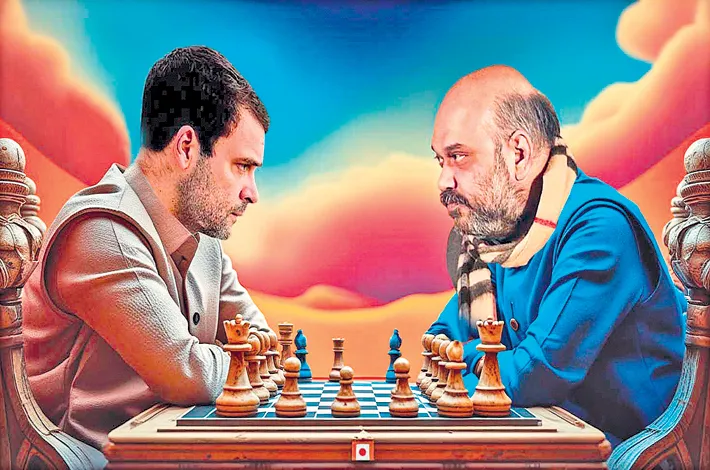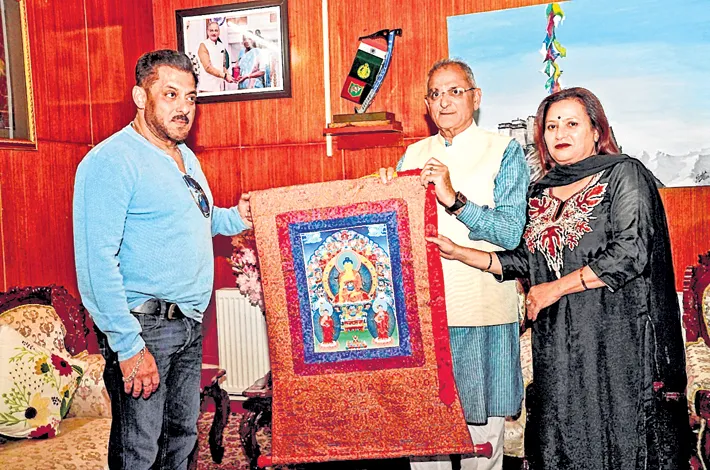The Political Chessboard BJP’s Dominance, Cong’s Rebirth
10-02-2025 12:19:47 AM

V J M DIVAKAR I hyderabad
In the bustling political landscape of the country, Bharatiya Janata Party (BJP) leading the National Democratic Alliance (NDA) has recently secured a resounding victory in Delhi, effectively sidelining the Aam Aadmi Party (AAP). This victory is not just a local triumph but a part of a broader strategy aimed at diminishing the influence of regional parties across the nation.
From Uttar Pradesh's Bahujan Samaj Party led by Mayawati to AIADMK in Tamil Nadu, Janata Dal (S) in Karnataka, Bharat Rashtra Samithi (BRS) in Telangana, YSR Congress Party (YSRCP) in Andhra Pradesh, and Nitish Kumar's Janata Dal (United) in Bihar, the BJP has systematically weakened these regional stalwarts.
The latest political manoeuver in Delhi has left AAP in disarray, a party which, under the leadership of Arvind Kejriwal, had emerged from the India Against Corruption (IAC) movement. This movement, with its roots in anti-corruption protests led by Anna Hazare, had significant backing from BJP, RSS, and other right-wing organizations.
Ironically, the rise of AAP contributed significantly to the decline of Congress-led United Progressive Alliance (UPA) in 2014, paving the way for Narendra Modi's BJP to ascend to national power. The recent defeat in Delhi, therefore, is seen by some within Congress as a form of poetic justice or sweet revenge against AAP, which had previously siphoned votes from Congress in states like Punjab, Haryana, and Goa.
However, the story does not end with BJP's victories. Congress, though battered, sees a silver lining in this political upheaval. The defeat of AAP in Delhi might have provided Congress the narrative needed to regroup. Several senior Congress leaders are advocating for a return to the grassroots. They argue that this is the moment for Congress to rekindle its lost cadre, who have drifted towards various regional parties like Trinamool Congress in West Bengal, BRS in Telangana, and AAP in Delhi and Punjab.
The historical precedent they draw upon is from the era of Indira Gandhi, who, after the split in Congress in 1969, rebuilt the party from the ground up. She not only reorganized the party into Congress (I) but also introduced a new election symbol—the Cow and Calf, symbolizing a fresh start for the party. The current Congress leadership views this period of political flux as an opportunity to redefine and reposition the party as the primary national alternative to BJP.
In states where BJP sees opportunities for expansion, such as Telangana, the party is likely to intensify its efforts to consolidate power. However, this also presents Congress with a chance to fortify its position, especially in states like Bihar where it has been ousted. Here, the Congress might leverage the anti-incumbency sentiment against BJP or any other ruling party, focusing on governance issues, corruption, and the need for a more inclusive political agenda.
The narrative within Congress circles is one of cautious optimism. The party's leadership is aware that rebuilding trust and organizational strength will require not only strategic political maneuvers but also a genuine connection with the electorate. They must address the public's disillusionment with politics, which has partly fueled the rise of regional parties and even BJP's nationalist rhetoric.
The political landscape of the country, thus, remains dynamic and unpredictable. While BJP continues its aggressive expansion, aiming perhaps to topple more regional governments in states like Punjab and Himachal Pradesh, Congress is at a crossroads.
Will it seize this moment to reinvent itself, or will it succumb further into the background, overshadowed by both BJP's nationalistic fervor and the vibrant regionalism of various state parties? Only time will tell, but one thing is clear: the battle for India's political soul is far from over, with each move on this vast chessboard shaping the future of the world's largest democracy.








